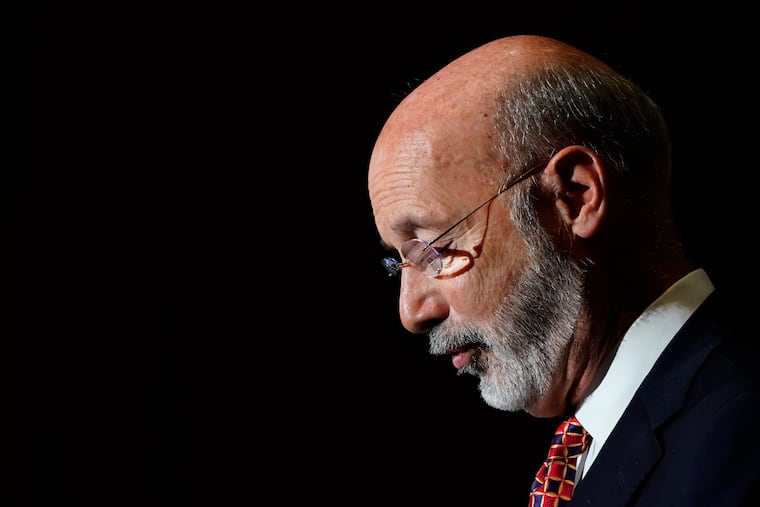Pa. must increase minimum wage | Opinion
Elevated inflation has provided further evidence that raising the minimum wage is not only necessary for the sake of workers, but also the economically wise thing to do.

With Congress’ continued failure to raise the minimum wage, it is incumbent upon Pennsylvania lawmakers to establish a statewide minimum above the outdated federal level. While this was certainly true this past spring, when an Inquirer editorial urged Harrisburg to act, elevated inflation in the months since has provided further evidence that legislation is required both for the sake of workers and the timely thing to do economically.
Pennsylvania is one of 21 states that has adopted or is bound by the federal minimum wage of $7.25 per hour. This floor was last set in July 2009, and the 12 years since constitute the longest stretch of time the federal minimum has not been raised since its creation in 1938. If adjusted for inflation, according to the consumer price index (CPI), the minimum wage would currently stand about $2 higher.
Nine dollars and 25 cents per hour is still not a livable wage (in Pennsylvania, that number is closer to $13 for a childless worker), but the $2 gap highlights the extent to which price increases erode wages over time. While inflation remained subdued for much of the last decade, it has accelerated during the pandemic. Price increases show few signs of abating quickly, and consumers are sounding the alarms. Pennsylvania’s minimum stands to look more and more paltry.
On a local level, Philadelphia is no stranger to this policy debate. In 2018, Mayor Jim Kenney and City Council passed a minimum wage for both city employees and businesses that contract with the city. The measure incrementally raises the minimum wage to $15 per hour for tens of thousands of employees. Importantly, once $15 per hour is reached next July, the law ties subsequent minimum wage increases to the CPI. (Such cost-of-living adjustments are not uncommon. Federal Social Security benefits are a famous example — and will rise significantly in 2022.)
The city also held a referendum in 2019 concerning a $15 minimum that passed with overwhelming support. Unfortunately, Philadelphia, unlike other cities around the country, cannot legally raise the limit for all workers. Such matters fall to Harrisburg.
Debate surrounding minimum wage hikes is often two-pronged: How much, and how quickly? Either question invites arguments over uncertain economic outcomes, especially with respect to employment. Raise wages too much, and employers might have to let workers go. Raise them too quickly, and employers might compensate by hiring fewer workers or hiring workers for fewer hours. It’s a tricky balance.
At present, the United States is experiencing an unusual labor shortage despite elevated unemployment. Amid record job availability (the Northeast region boasts a record 1.8 million open positions, 50% more than just before the pandemic), Americans have been slow to go back to work. The reasons are manifold: stimulus checks from the federal government; increased savings during the pandemic; enhanced unemployment benefits; lingering fears of COVID-19; school closures; inadequate or unattainable child care.
With that shortage in mind, millions of workers nationwide have the upper hand in negotiating pay for the first time in years. In stark contrast to the period following the Great Recession, wages are currently rising fastest for the lowest wage earners. Nationally, 42% of small businesses reported having to raise compensation in September. That’s the highest percentage on record, in data stretching back to the Reagan administration.
But this realignment in the labor market will prove neither permanent nor sufficient in the long run. Competition among workers vying for the same jobs will return. Stiffer competition means employers will no longer feel pressure to shell out. If inflation remains elevated, a higher floor for the minimum wage, one tied to inflation, will prove even more necessary. Tellingly, even substantial wage gains in 2021 are not outpacing prices.
In truth, a very small fraction of workers actually earns $7.25 per hour. Yet the minimum wage is the floor against which employers price their pay. Because businesses are already reckoning with increased labor costs, now is precisely the time to raise the floor. Waiting another year (or two or three) would squander a unique opportunity. For many employers, a new minimum, if priced within reason, would but marginally increase the temperature of a pot already at a boil.
An increase to the minimum wage will prove far more important in the long run, when labor market conditions cool. While workers hold the cards today, we should remember this will not be the case forever.
Matthew Jeffrey Vegari is a writer and economics researcher who previously worked for the City of Philadelphia as a policy associate.